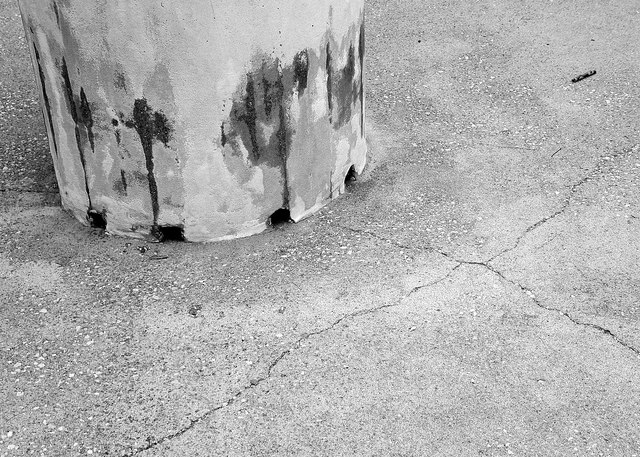 Last week, I wrote about this book, Wabi-Sabi for Artists, Designers, Poets & Philosophers, by Leonard Koren, and how it confirmed for me that wabi-sabi includes subjects that are often overlooked.
Last week, I wrote about this book, Wabi-Sabi for Artists, Designers, Poets & Philosophers, by Leonard Koren, and how it confirmed for me that wabi-sabi includes subjects that are often overlooked.
This week I’ll share examples of the material qualities of wabi-sabi, as summarized from the book. I noticed that my examples lean towards walls and roads and rusty things. But, any object can be a potential subject.
First, wabi-sabi lives by the principle that “all things are either devolving toward, or evolving from, nothingness.”
Material Qualities
Natural Process – materials affected by weathering and human elements. Shows up as rust, tarnish, stains, warping, shrinking, shrivelling, cracking. Yet, they still possess a sense of poise and strength of character.

Irregular – odd, misshapen, awkward; what many would consider ugly. May be something broken (by an accident) or just happened by chance.

Intimate – small and compact, inward-oriented. They beg us to get close, touch, relate. Tranquil and calming, enveloping and womb-like.

Unpretentious – do not blare out their importance; not the center of attention; the overlooked. Understated and unassuming, yet still have a quiet presence or authority.

Earthy – coarse and unrefined. Made from raw materials; tactile.

Murky – a vague, blurry quality; sponge-like, faded colours. Hard edges take on a soft glow.

Simple – economy of means, pared down to essence (but still retain the poetry), clean and unencumbered, limited palette yet emotionally warm.

Where does wabi-sabi show up for you?
** Books mentioned have Amazon affiliate links, meaning I make a few cents if you purchase through my link. I only recommend books that I’ve read.
Read: Wabi-Sabi (Part 1)
All of the above! Wonderful compilation!
Hi, Kim:
Many thanks for the articles and book recommendations. I have ordered the Wabi-Sabi and Thomas Merton Master of Attention volumes. Getting impatient to read these but must wait another couple of weeks……
John
Wondrous examples of the wabi-sabi principles